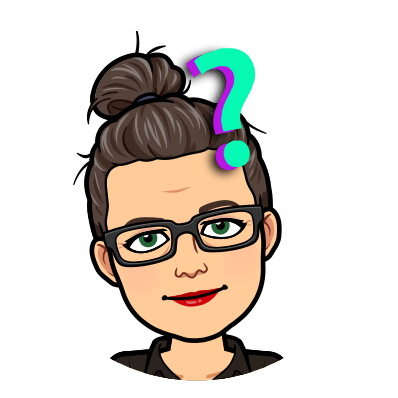Category: ETL504 Teacher Librarian as Leader
Reflection on Case Study 6 – Wellbeing

Prioritising tasks and making time for personal wellbeing is easier said than done and I have realised this along the course of the case studies. While I was initially judgemental about the head teacher in the case study not following my advice from case study 1, I am more understanding now.
It is very difficult to focus and critically analyse and apply information when you are emotionally distracted by familial or personal issues. It is important to be proactive and have support structures in place before a stressful event occurs, such as recognising possible triggers and identifying coping strategies to deal with those triggers – much like we do as teachers by setting up our classroom structures.
Much like the head teacher librarian in the case studies, I have a lot on my plate. Work for me has been tumultuous for nearly my entire adult life. I have only been employed as a permanent employee for a mere 6 of my 32 years in gainful employment. I have had several genetic defect and life-threatening operations and 2 complicated pregnancies. I have immigrated from the U.S. and have lived for 22 years in Australia without my birth family. I have lived for 6 years in the Far West of NSW and have found the climate (both in terms of weather and work) challenging. Thus, I have had to work very hard over the years to try to prioritise travel and home life over work and career status…not easy when teaching is your passion!
I thought I had it all together!
I’ve tried to develop some hobbies that do not require other humans (photography, gardening, reading, playing with my dog) and learnt to take time to do these hobbies when I am feeling overwhelmed.
I have tried to prioritise my home life over my work life by shutting off and leaving work at 5:00pm each day. This has been made easier by only working 2 days a week and working in a NSW Department of Education Preschool that locks its doors at 3:30 each day.
I also set limits on parts of the house for electronics as to where they are not allowed (e.g. the kitchen/dining areas, toilets and bedrooms) in order to ensure that our family are sharing spaces appropriately and interacting authentically together in these spaces.
I have tried to combat the lack of permanence in my job and lack of power and control over my destiny, by attempting a masters degree in Teacher Librarianship. (Although my work hours have been modified to include this, which adds to my stress).
I try to live life in the moment, focussing on what I need to do in the next minute, rather what I need to do later or tomorrow or in 5 years time. It is great to have a vision, and strategies to achieve that vision and I’m very thankful to finally have this. It is also important to recognise that sometimes the steps towards the vision begin by simply swinging your legs out of the bed to start the day and thinking of nothing else until you’ve achieved that goal.

Then something happens that isn’t expected – as it always does.
Both of my children are on the autism spectrum, and it is likely both my husband and I are also (although only my youngest is the only one to recently obtain a diagnosis of ASD, ADHD and SPD). While I’ve always known that my boys are different and I appreciate and enjoy difference and I was not worried about going to Manly for a week for the diagnosis process, the final diagnosis of my youngest, particularly when there is a major assignment due for my degree, has caused my life to re-enter a state of flummox. What I didn’t plan for, was how to tell him about his diagnosis and how to deal with his emotional state following that discussion.
Thankfully I have my very supportive husband has looked after the children full time to enable me to complete it. Thankfully, we’ve been talking to the children regularly about ASD, so the news, when we can sit down and discuss the plan for delivering it, won’t come as such a shock.
Thankfully, through the support structures were in place through CSU, I had applied for and was granted a week extension on my assignment.
 I’ve also located the ‘Personal (Wellbeing) Strategic Plan’ provided by the ETL504 course resources, have saved it to my files and will include it in my repertoire (see also the link in the menu on the left side of this blog). I hope this will help me in the future to be more proactive in my personal wellbeing and possibly help others too.
I’ve also located the ‘Personal (Wellbeing) Strategic Plan’ provided by the ETL504 course resources, have saved it to my files and will include it in my repertoire (see also the link in the menu on the left side of this blog). I hope this will help me in the future to be more proactive in my personal wellbeing and possibly help others too.
Advocacy for a Future Ready Library – Reflection on ETL504 Module 6.1

Following the reading of several articles and websites, [including Toor, Weisberg & Walter, (2010); Kachel, DelGuidice, & Luna, in Levitov, (2012); SirsiDynix, (2016); Smith (2013); Bonanno & Moore (2009); ASLA (2019); and ALIA National (2014)] it is time to lift our game in advocating for school libraries in Australia.
This is an area that was briefly covered in the ‘Introduction to Teacher Librarianship’ course, where I found a book chapter that details several marketing roles that teacher librarians should / could utilise: Chapter 9 ‘Why a marketing background is a good fit for the library profession’ by Beth Canzoneri in Lowe-Wincentsen, D. (2014).
 Thus, I’ve created a short GoogleDoc survey to help ensure any library in which I’m employed is adequately advocating for the library amongst all avenues and facilities available. (See also the menu link to the left of this blog).
Thus, I’ve created a short GoogleDoc survey to help ensure any library in which I’m employed is adequately advocating for the library amongst all avenues and facilities available. (See also the menu link to the left of this blog).
NOTE: This is a very simple idea for managing what is a very complex area, linked to the school / library strategic plan, mission, vision and values, (about which I’ve gone into more detail in other blog posts).
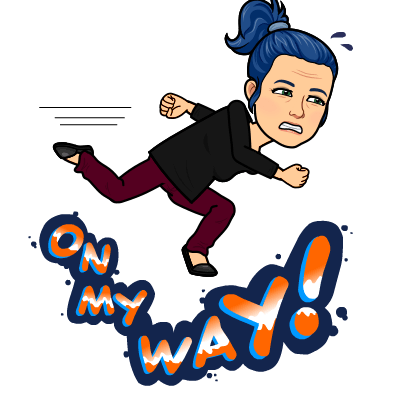
In the future I’d like to use the resources below to help create a marketing strategy for my library…
References
ALIA National. (2014, January 6). Promoting your school library [Video file]. Retrieved from https://youtu.be/Va5mo6ik2_M
Australian School Library Association (ASLA). (2019). Students need access to high quality school library services. In ASLA: Advocacy. Retrieved from https://asla.org.au/students-need-school-libraries
Bonanno, K. & Moore, R. (2009). Advocacy: Reason, responsibility and rhetoric. Retrieved from https://kb.com.au/content/uploads/2014/08/Keynote-Advocacy.pdf
Kachel, D., DelGuidice, M. & Luna, R. in Levitov, D. (Ed.) (2012). Activism and the school librarian – Tools for advocacy and survival [Libraries Unlimited version]. Retrieved from EBSCOhost.
Lowe-Wincentsen, D. (2014). Skills to Make a Librarian : Transferable Skills Inside and Outside the Library. Amsterdam: Chandos Publishing. Retrieved from http://search.ebscohost.com.ezproxy.csu.edu.au/login.aspx?direct=true&db=nlebk&AN=927792&site=ehost-live
SirsiDynix. (2016, October 6). Library connections video [Video file]. Retrieved from https://youtu.be/e6m1rTDiqlI
Smith, P. S. [TEDxTalks]. (2013, December 16). What to expect from libraries in the 21st century [Video file]. Retrieved from https://youtu.be/fa6ERdxyYdo
Toor, R., Weisburg, H. K., & Walter, V. A. (2010). Being indispensable : A school librarian’s guide to becoming an invaluable leader (epdf). Retrieved from https://ebookcentral.proquest.com
Ideas for Developing a Future Ready Library in Pictures and Graphs
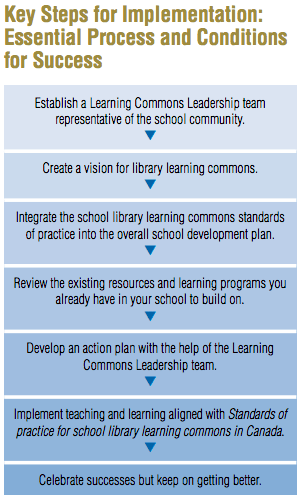
Leading Learning is licensed under a Creative Commons Attribution-NonCommercial 4.0 International License.
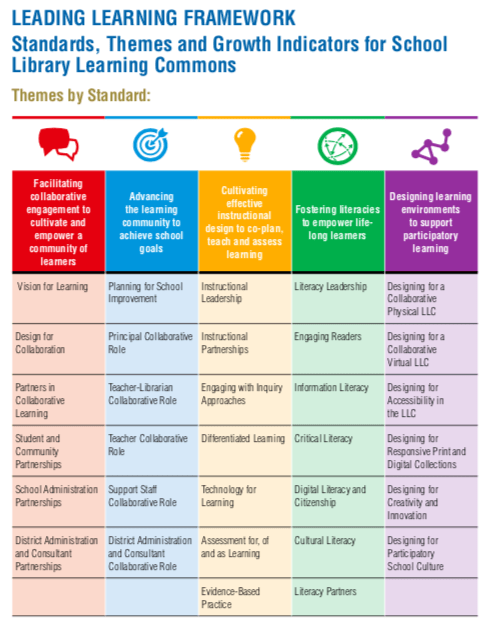
Leading Learning is licensed under a Creative Commons Attribution-NonCommercial 4.0 International License.
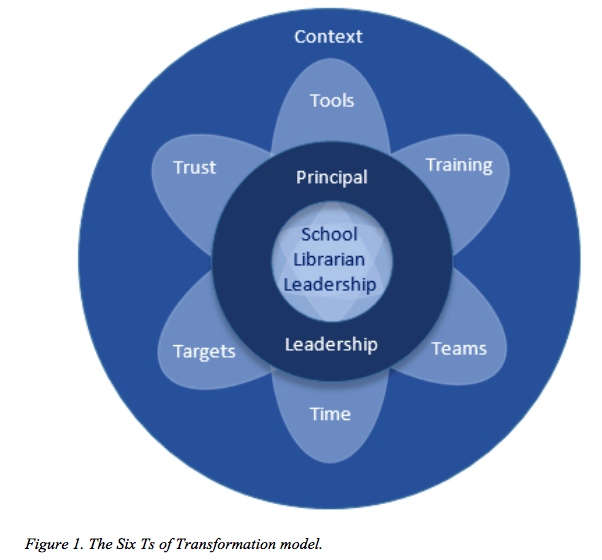

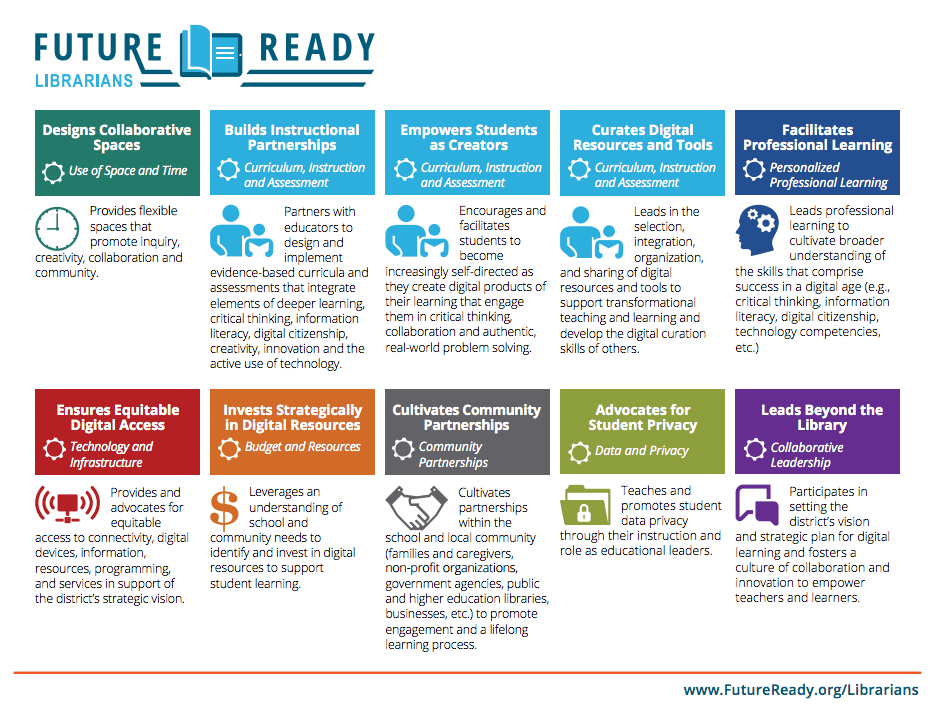
These images are great resources and worth remembering and utilising for developing a future ready school library ‘learning commons.’ Where are Australia’s ideas for future ready libraries? Are they just for members of ASLA only or is the ASLA ‘futures’ white paper the only resource we’ve yet to produce? Why are we relying on the resources from North America?
References
Alliance for Excellent Education (2016). Future ready librarians [Image]. In Future Ready Schools. Retrieved from http-/1gu04j2l2i9n1b0wor2zmgua.wpengine.netdna-cdn.com/wp-content/uploads/2017/01/Library_flyer_download
Baker, S. (2016). Figure 1. The six Ts of transformation model. [Image]. In School libraries Worldwide, 22(1), 143-159. Retrieved from http://www.iasl-online.org/resources/Documents/PD%20Library/11bakerformattedfinalformatted143-158.pdf
Canadian Library Association. (2014). Leading Learning Framework – Standards, Themes and Growth Indicators for School Library Learning Commons. [Image]. In Leading Learning- Standards Of Practice For School Library Learning Commons In Canada. Ottawa, ON- Canadian Library Association. Retrieved from https://apsds.org/wp-content/uploads/Standards-of-Practice-for-SchoolLibrary-Learning-Commons-in-Canada-2014.pdf
Canadian Library Association. (2014). Key Steps for Implementation. [Image]. In Leading Learning- Standards Of Practice For School Library Learning Commons In Canada. Ottawa, ON- Canadian Library Association. Retrieved from http-//clatoolbox.ca/casl/slic/llsop.html
Future Ready Schools (2019). The 7 Gears [Image]. In The Future Ready Framework. Retrieved from https///dashboard.futurereadyschools.org/framework
Professional Learning Transference: Why professional development doesn’t always result in improved outcomes
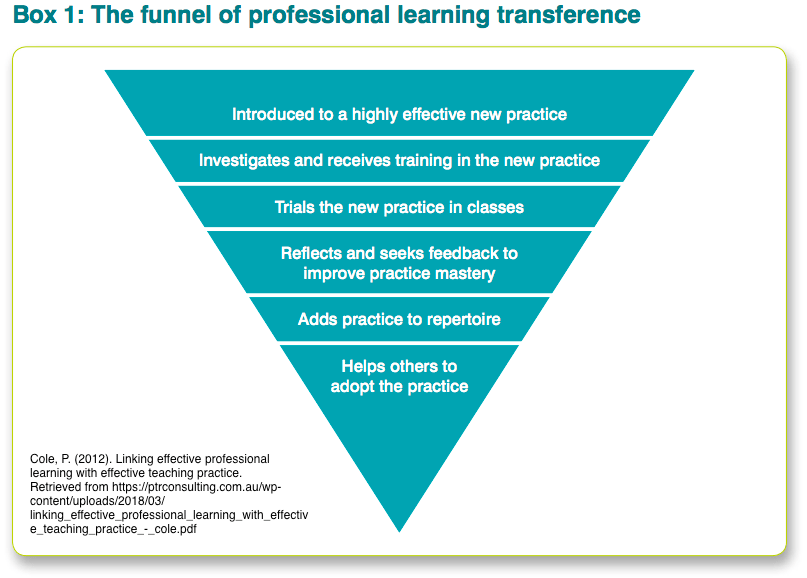
I was just saying to my husband the other day about how different this degree is to the training we receive as teachers. Even things that we are interested in, often get attended, our enthusiasm is strong as we walk through the doors of our school and then, mysteriously, we never seem to implement what we’ve learnt with any real vigour, or if we do it soon peters out, lost in the quagmire or superseded by the next training course we attend.
My husband is a Positive Behaviour for Learning (PB4L) Assistant Principal External Coach and the PB4L team in NSW are focussing on this exact phenomenon and implementing strategies demonstrated by Cole (2012), who explains very clearly why this occurs in the image (above) ‘The funnel of professional learning transference’ – Used here with permission from AITSL).
Most of us never make it to reflecting and/or seeking feedback to improve mastery, much less adding the practice to our repertoire and very very rarely helping others to adopt the practice.
This is where PB4L and QTR are both so beneficial! Out of all of the lessons I’ve modified based on training I’ve received, only one has stood out as something that I would fight vehemently to keep in my practice and that is the L3 shared reading lesson that I did in QTR. Following the successful lesson (where I received helpful feedback from three peers who had not attended the L3 training), all three wanted to learn how to implement the lesson (or series of lessons as it were).
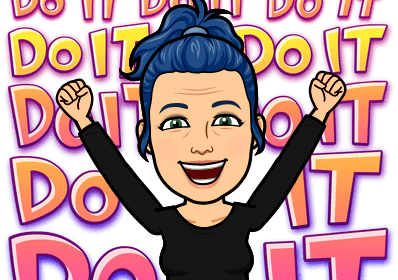
I can see how this will help my assignment and help me create a community of practice in my library and at my future school(s)! I am totally capable of reflecting, helping others reflect, adding skills to my practice and helping others add them to theirs…Now to get it into my discussion paper somehow…
References
Cole, P. (2012). Linking effective professional learning with effective teaching practice. Retrieved from https://ptrconsulting.com.au/wp-content/uploads/2018/03/linking_effective_professional_learning_with_effective_teaching_practice_-_cole.pdf
Building a Community of Practice

In 2010, I was teaching part time job share on a stage 1 class at a South West Sydney primary school and had the honour of being led by my husband (acting assistant principal for stage 1) and Carolyn (Draper) Mozayani, Deputy Principal.
Working with my husband as my supervisor (something that had already been successfully attempted by another married couple at the school) was an interesting challenge of professionalism. He also supervised my job-share partner and it was very difficult not to come home and vent my frustrations to him. He helped me see how to better communicate with her via a communication journal and to make sure that the communication between my colleague and myself was being correctly encoded and decoded.
Working with Carolyn was an absolute dream. She was the most kind and patient and positive person with whom I have ever worked. She unfortunately passed away with cancer in 2015 after getting married and having a child (her biggest life goals). But the memories of her and the professional development she offered, remain. Her main mantra was for students to always witness calm, patience and kindness in words and actions. She also helped introduce several whole school initiatives, including a ‘building a community of practice’ how does it look, sound and feel (unpublished) document (image below):
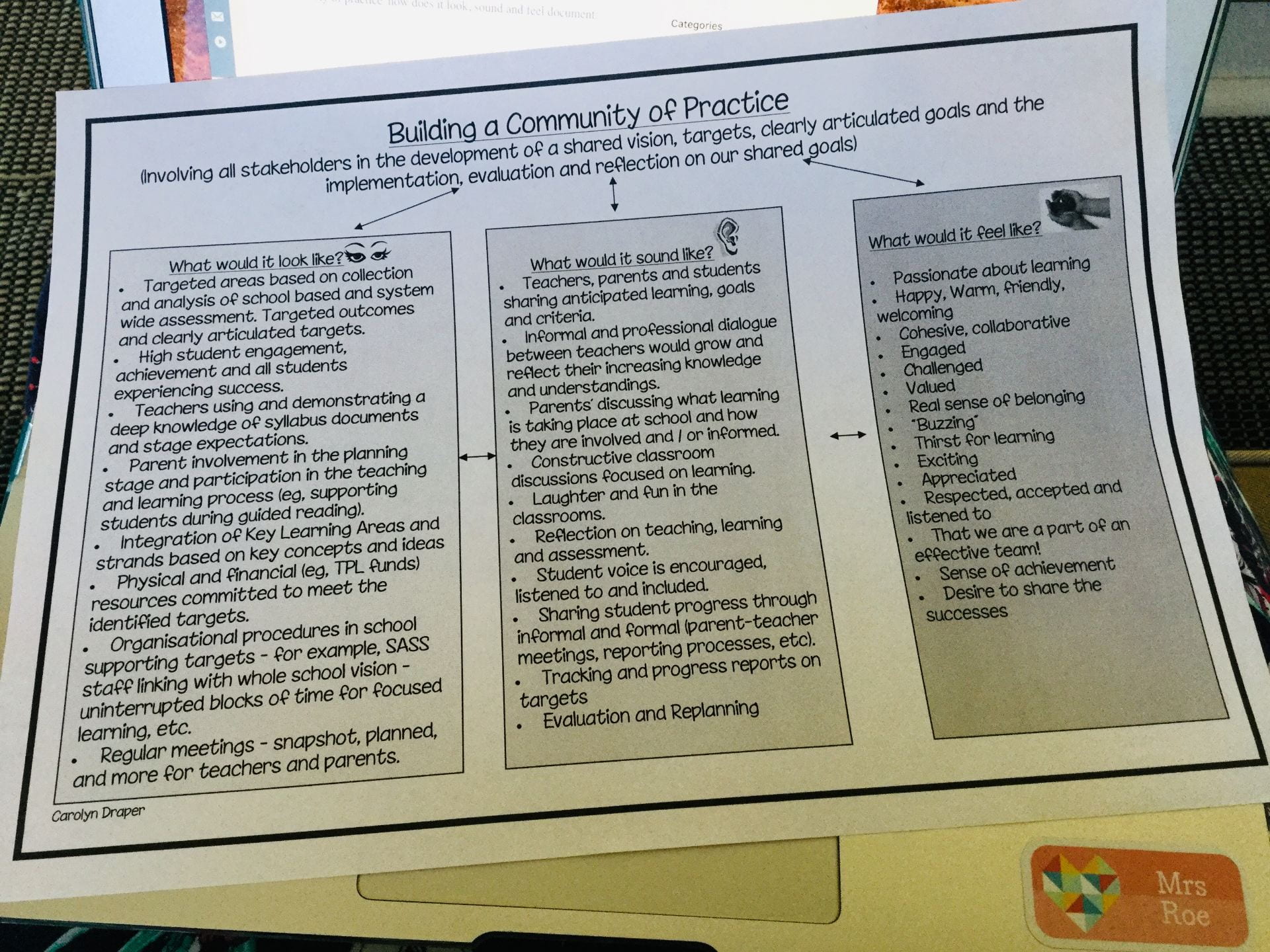
In this document, it is interesting to note that data collection is the first item on the list, yet I felt no stress or pressure regarding its implementation (unlike my stress during other whole school data collection initiatives at different schools in the last three years).
I want to honour her memory and leadership by trying to build a community of practice myself. But before we try to build one, what exactly does a ‘community of practice’ actually mean? More on this in Assessment 2!
 In terms of networking and collaboration, being on the social club / committee is key for the TL! Why would people want to collaborate with you if you hide in the library and fail to socialise? “Get out there gorgeous!” as Carolyn would say.
In terms of networking and collaboration, being on the social club / committee is key for the TL! Why would people want to collaborate with you if you hide in the library and fail to socialise? “Get out there gorgeous!” as Carolyn would say.
 In terms of peer-to-peer professional development, I’ve utilised my knowledge of SMART goals (from a previous blog post), my knowledge of NESA teaching standards (through my 2009 NESA accreditation and 2019 maintenance), training in the GROWTH model of building capacity in others (2008) and my training in Quality Teaching Rounds (2017) to create some templates for collegial and self evaluation of teaching and learning lessons, (which I’ve also put up as links in the left menu of this blog, alongside the other leadership tools that I had put there from previous CSU TL courses).
In terms of peer-to-peer professional development, I’ve utilised my knowledge of SMART goals (from a previous blog post), my knowledge of NESA teaching standards (through my 2009 NESA accreditation and 2019 maintenance), training in the GROWTH model of building capacity in others (2008) and my training in Quality Teaching Rounds (2017) to create some templates for collegial and self evaluation of teaching and learning lessons, (which I’ve also put up as links in the left menu of this blog, alongside the other leadership tools that I had put there from previous CSU TL courses).
I suppose I will have to keep reading the modules to develop more ideas on building a community of practice, like how to write a vision / mission statement and how to write a strategic plan…fingers crossed it all comes together!
Reflection on Module 3.3 Change Leader – SO MANY IDEAS!
“Change management is important but change leadership is essential” (Pennington, n.d.). Leadership versus Management:
Have a clear understanding about the difference between leadership and management, because if something turbulent happens that means an organisation or school is required to implement change and we are stuck in management tasks, we can’t lead (Kotter, 2013).
Therefore, leadership (leading) is: creating a strategy and vision for the future and creating an environment that motivates others to join the vision and strategy; whereas management (functional) is: planning, budgeting, organising, staffing controlling and problem solving (Kotter, 2013).
[I won’t write too much more about management versus leadership because I think I’ve written loads about this in my blog posts for ETL503 Resourcing the Curriculum]
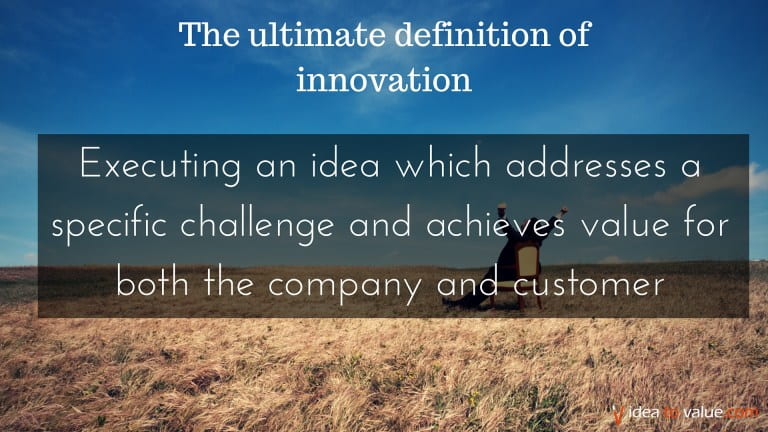
Innovation versus change:
 I think we also need to have a clear definition as to what is innovation versus change. The two seem to be being used interchangeably in this course, and in some ways that could be dangerous, particularly given the ‘change fatigue’ discussed in my previous post(s). Innovation is change that is adding value for both the company and the customer [as detailed by Nick Skillcom from Idea to Value (2019)], but change doesn’t necessarily do this and promoting a ‘change culture’ frightens me. We need to remember to match innovation (and subsequent change) to goals. Perhaps a ‘change culture’ is an innovative culture that is open to change, but not necessarily constantly changing?
I think we also need to have a clear definition as to what is innovation versus change. The two seem to be being used interchangeably in this course, and in some ways that could be dangerous, particularly given the ‘change fatigue’ discussed in my previous post(s). Innovation is change that is adding value for both the company and the customer [as detailed by Nick Skillcom from Idea to Value (2019)], but change doesn’t necessarily do this and promoting a ‘change culture’ frightens me. We need to remember to match innovation (and subsequent change) to goals. Perhaps a ‘change culture’ is an innovative culture that is open to change, but not necessarily constantly changing?
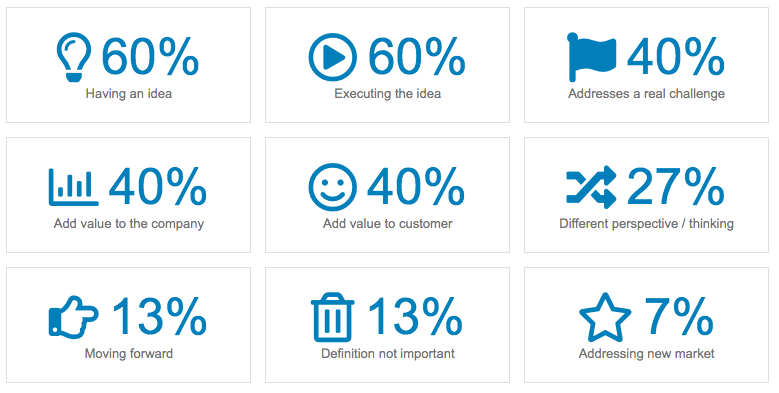
These are interesting, given the wording of the principal standards from the Australian Institute for Teaching and School Leadership (AITSL): “Identify the need for innovation and improvement; Develop a process and common language for change; Maintain their values whilst adapting flexibly and strategically to changes in the environment; Embed a culture of continuous improvement (AITSL, 2015).
Innovation: In order to recognise necessary innovations, I need to identify my passion. What’s my passion? Literacy. Quality literature. Education of children. Helping others find their passion. Encouraging colleagues to promote the social and emotional learning of students.
Professional Goals: 1. linking my practices to research; 2. linking my practices to the ASLA librarian standards.

Leading from the middle:
The whole premise behind this is to build capacity in others, which is what we do as teachers every day (Gottlieb, 2012). First we must lead by doing, and must get to know our team at a personal level. Gottlieb (2012) has many ideas about how to run a meeting or series of meetings to achieve this.
 Morning meetings that build personal connections link to the teacher/students’ ‘morning meeting’ idea in the new wave of positive behaviour for learning and trauma informed practice pedagogy promoted by the Berry Street Educational Model (BSEM) or the Responsive Classroom.
Morning meetings that build personal connections link to the teacher/students’ ‘morning meeting’ idea in the new wave of positive behaviour for learning and trauma informed practice pedagogy promoted by the Berry Street Educational Model (BSEM) or the Responsive Classroom.
Gottlieb (2012) also suggest we create a website page of our team ‘biographies’ to help team members get to know each other and reinforce such things as: What are your values or strengths? What excites you about our strategic plan or mission? Why are the things we do in our library important? What is your personal journey that has brought you here, or what is your personal teaching and learning philosophy?
 Well hell’s bells, I thought of this ‘Spotlight’ idea too about two years ago and my supervisor at the time thought it was a great idea! Unfortunately, his son fell ill and he had to move away before the idea came to fruition (and his replacement did not renew my contract). Time to dust off the idea and utilise it in my future library!
Well hell’s bells, I thought of this ‘Spotlight’ idea too about two years ago and my supervisor at the time thought it was a great idea! Unfortunately, his son fell ill and he had to move away before the idea came to fruition (and his replacement did not renew my contract). Time to dust off the idea and utilise it in my future library!
Implementing an innovation culture (not a change culture!):
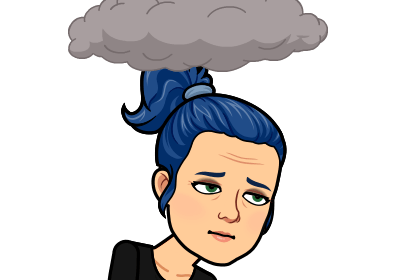
Opinion based on my own experience: Changing the work culture in a school is a really big deal. Some might even say, insurmountable. When inundated with ‘top down’ policies, budget constraints, and a ‘to be run like a business’ mantra (influenced by a employment policy for administration staff that literally advocates for nepotism; ‘local schools local decisions;’ promotion on ‘merit’ being rorted – particularly for leadership positions; the bullying of bureaucrats and top-level executives resulting in the bullying of leaders; resulting in bullying of teachers, resulting in bullying of students, resulting in bullying on the playground; the oversupply of teachers (particularly new scheme teachers) in primary and the undersupply in secondary; the push to employ more (new scheme) temporary contract teachers (who struggle with building relationships with students – one of the main indicators of academic success) in primary over offering permanent positions – pitting the temps’ against each other in competition for the few permanent positions that arise; laying off temps in favour of ‘free trial’ teachers in from the city on incentive schemes, etc) trying to change a school culture from the bottom up, (or ‘the middle’ as per Gottlieb, 2012) at this stage is all but futile.
And while I agree that we need to develop as teachers, I am struck by Lortie’s (1975 in Oberg, 2011) terms “presentism, conservatism; and individualism” as being hinders to the change process. When I read this, I saw it as the bureaucratic level trends in society and global political trends rather than or in addition to the trends in teacher attitudes towards ‘change’ / innovation.
A Google dictionary search defines the terms as: “Presentism: uncritical adherence to present-day attitudes, especially the tendency to interpret past events in terms of modern values and concepts.”…”Conservatism: commitment to traditional values and ideas with opposition to change or innovation; (or) the holding of political views that favour free enterprise, private ownership, and socially conservative ideas.”…”Individualism: the habit or principle of being independent and self-reliant; (or) a social theory favouring freedom of action for individuals over collective or state control.”
Wealth doesn’t ‘trickle down,’ but leadership attitudes seem to, as supported by Harvard Business Review (Zenger & Folkman, 2016).
The trick is to try to stop the ‘trickle down’ effect from reaching the students – and in that, the buck stops with me! I’m reminded of the social emotional lesson (learned from BSEM trauma informed practice teacher training) that I teach to students about things they can control. (I can’t control the bureaucrats or political arena, but I can control myself!)
 Thus, to combat anti-innovative mindsets, I will aim to address my personal presentism, conservatism and individualism mindset(s) through: professional development, personal reflection, collaboration, questioning the validity of top-down changes (such as data collection, standardised testing, and mandatory curriculum), as well as battling the conservative practices of social inequity and lack of cohesion that trickle down to school inequities–further disadvantaging marginalised students (Oberg, 2011).
Thus, to combat anti-innovative mindsets, I will aim to address my personal presentism, conservatism and individualism mindset(s) through: professional development, personal reflection, collaboration, questioning the validity of top-down changes (such as data collection, standardised testing, and mandatory curriculum), as well as battling the conservative practices of social inequity and lack of cohesion that trickle down to school inequities–further disadvantaging marginalised students (Oberg, 2011).
 Regarding ‘top down’ changes and conservative practices: I will confidently ask my team(s) the question: ‘How can this innovation (such as a behaviour peg chart or stoplight ‘welfare’ policy), which is intended to improve teaching and learning, contribute to making a difference for all stakeholders and all students, or will it make a difference only for those already advantaged (such as those who are meeting outcomes, have social capital, or who come from economically stable, privileged backgrounds)?’ (Oberg, 2011 p.2).
Regarding ‘top down’ changes and conservative practices: I will confidently ask my team(s) the question: ‘How can this innovation (such as a behaviour peg chart or stoplight ‘welfare’ policy), which is intended to improve teaching and learning, contribute to making a difference for all stakeholders and all students, or will it make a difference only for those already advantaged (such as those who are meeting outcomes, have social capital, or who come from economically stable, privileged backgrounds)?’ (Oberg, 2011 p.2).
 I will get to know the teaching and learning philosophies influencing teaching practices, the school’s attitudes towards innovation (or if it is simply ‘change’), how the teachers interact (in isolation or collaboratively), the executive team roles and goals, and the methods for determining success – both professionally and academically (Pratt, 2017; Oberg, 2011, p.2; Green 2011).
I will get to know the teaching and learning philosophies influencing teaching practices, the school’s attitudes towards innovation (or if it is simply ‘change’), how the teachers interact (in isolation or collaboratively), the executive team roles and goals, and the methods for determining success – both professionally and academically (Pratt, 2017; Oberg, 2011, p.2; Green 2011).
 I will proactively start in ‘my’ library by being patient with the innovation process (Pratt, 2017; Oberg, 2011), working flexibly and collaboratively with all stakeholders, setting SMART goals that are based on both the school mission/strategic plan/library mission/strategic plan of improving teaching and learning as well as based on evidence/research based innovations of 21st century teaching practices such as differentiation (Oberg, 2011; Green 2011).
I will proactively start in ‘my’ library by being patient with the innovation process (Pratt, 2017; Oberg, 2011), working flexibly and collaboratively with all stakeholders, setting SMART goals that are based on both the school mission/strategic plan/library mission/strategic plan of improving teaching and learning as well as based on evidence/research based innovations of 21st century teaching practices such as differentiation (Oberg, 2011; Green 2011).
Things I currently lack but need in a future teacher librarian role (according to Green (2011, p.23)): “established authoritative position, credibility amongst peers, a vision that is based on best practice and, importantly, a mandate to implement or produce change (innovation).”
 I need to utilise my skills in linking practice to researched evidence, marketing, ICT and QTR (as well as from training and experience received from BSEM, L3, AL and TEN, etc) in my library and collaborate with teachers, offering professional development in these areas, in order to help them utilise evidence-based practices, helpful computer technologies, effective lesson structures or to professionally and collaboratively evaluate their lessons or units of work (Green 2011).
I need to utilise my skills in linking practice to researched evidence, marketing, ICT and QTR (as well as from training and experience received from BSEM, L3, AL and TEN, etc) in my library and collaborate with teachers, offering professional development in these areas, in order to help them utilise evidence-based practices, helpful computer technologies, effective lesson structures or to professionally and collaboratively evaluate their lessons or units of work (Green 2011).
References
Australian Institute for Teaching and School Leadership (AITSL). (2015). Interactive leadership profiles. In AITSL.Retrieved from https://legacy.aitsl.edu.au/leadership-profiles/interactive-profiles/leading-improvement-innovation-and-change
Gottlieb, H. (2012, October 30). Leading from the middle: Bringing out the best in everyone [Blog post]. Retrieved from https://creatingthefuture.org/leading-from-the-middle-bringing-out-the-best-in-everyone/
Green, G. (2011). Learning leadership through the school library. Access, 25(4), 22-26. Retrieved from http://www.asla.org.au/publications/access.aspx
Kotter, J. (2013, August 15). The key differences between leading and managing [Video file]. Retrieved from https://www.youtube.com/watch?v=SEfgCqnMl5E [4.23 mins].
Oberg, D. (2011). Teacher librarians as cultural change agents. SCIS Connections, 79. Retrieved from https://www.scisdata.com/media/1353/connections-79.pdf
Pennington, R. (n.d.). How to make change work. In Educational leaders: Leading and managing change. Retrieved from http://www.educationalleaders.govt.nz/Leading-change/Leading-and-managing-change
Pratt, A. (2017). The challenge of implementing change. SCIS Connections, 103. Retrieved from https://www.scisdata.com/connections/issue-103/the-challenge-of-implementing-change
Skillcom, N. (2019). What is innovation? 15 experts share their innovation definition. Retrieved from https://www.ideatovalue.com/inno/nickskillicorn/2016/03/innovation-15-experts-share-innovation-definition/
Zenger, J. & Folkman, J. (2016). The trickle down effect of good and bad leadership. Harvard Business Review. Retrieved from https://hbr.org/2016/01/the-trickle-down-effect-of-good-and-bad-leadership
Reflection on Case Study 4 & 5; Roles in Groups and Teams

The Creation of our Group
The creation of our group may have been, according to Belbin (2010) doomed from the start due to the way the group members were selected (which was, presumably and due to the constraints of our online study, fairly random). The creation of a balanced team is very challenging (as detailed in my previous post) and some of the problems that we are showing (mere cracks really, not necessarily conflicts) are indicative of the challenges of creating that balance.
Roles and Participation:
I think our group at this stage of the process are struggling to identify our roles. The person who previously accepted or chose the role of submitting the final ‘Case Study 3’ group post, was displaying a need to maintain that role in the ‘Case Study 4’ post (although she had put her hand up at the start to say that she would not be able to participate as much in case study 4 due to her workload constraints and I was the person in charge of the final submission this week). Perhaps her need to exert herself was a result of her feeling like she had something to prove e.g perhaps she was not happy with her level of participation (Roberts, 2012)?
I know I was not 100% happy the previous person in charge of the submission, as she cut several sentences from my work without checking with me. Rather than approach her regarding this, I chose to defer on the side of caution and recognise that, at the end of the day, working together as a team was more important than the integrity of my work being recognised.
Moreover, leading by example, when it was my turn to be responsible for the final submission, I was very careful to only lightly edit the other team member’s work so that it maintained a consistent and positive flow (e.g. changing the word ‘staff’ to ‘team member’ or ‘library team’). When the person in charge of the previous submission questioned this and suggested I edit the text, I explained why I had not ‘micro edited’ the work of other team members as it can become ‘problematic.’ I am not sure if she got the message but I am hopeful that it doesn’t cause further conflict.
Communication:
The lines of communication are also having a negative impact on our group dynamic (Roberts, 2012). Aside from the communication being 100% electronic (and therefore limited in volume, tone and body language) one of the participants bar myself and one other have contributed to the ‘getting to know you’ forum in our group. In a physical / face-to-face setting, everyone would join in on the discussion about themselves less likely to just sit silently and ignore the conversation like they are in online communication.
Furthermore, the communication is challenging as there are so many options. Some are posting their submissions in the wrong case study and feeling like there are too many areas where the submissions could go (the blog, the discussion the wiki or email).
Where to from here?
The creation of my team in the future will need careful consideration from the employment stage right through to the project completion stage.
In terms of communication, I’m not sure how to make it more clear except to say that a better understanding of where we are meant to chat versus submit our individual work could be more narrow? Maybe if everything was done in either the discussion section as a draft and then in the blog as a final and not anywhere else?
I think, in the future, I might need to be more assertive–rather than avoiding the conflict (Plocharczyk, 2013) and when it is my turn to be ‘in charge’ I lead the team in identifying everyone’s roles or at least helping them be more aware of the possible range of roles that we take on in groups at any given time (such as those listed in my previous post from Roberts, 2012; Porteus, n.d.):
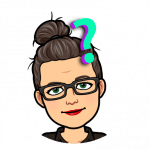 Leadership Thought: Is the case study group work about learning the leadership content better or is it a means in which to learn how to interact in the group as we mean to go forward in our own library or school teams?
Leadership Thought: Is the case study group work about learning the leadership content better or is it a means in which to learn how to interact in the group as we mean to go forward in our own library or school teams?
References:
Belbin, R. M. (2010). The art of building a team. Chapter 9, pp. 97-106. Team roles at work (2nd ed.). Retrieved from ProQuest Ebook Central.
Plocharczyk, L. (2013). Managing conflict and incivility in academic libraries. In K. Blessinger & P. Hrycaj (Eds.), Workplace culture in academic libraries. Retrieved from ProQuest Ebook Central. [Elsevier Science version]
Porteus, A. (n.d.). Roles people play in groups. Stanford University. Retrieved March 5, 2017 from https://web.stanford.edu/group/resed/resed/staffresources/RM/training/grouproles.html
Roberts, R. (2012, September 12). How identifying the different roles can help groups work better together [Blog post]. Retrieved from https://elt-resourceful.com/2012/09/12/how-identifying-the-different-roles-we-play-can-help-groups-work-better-together/
Reflection on ETL504 Module 3.2 (2019): Leading Change
Leading change, solving problems, building teams, effective communication & conflict resolution

Kotter’s 8 steps for leading change (in Madsen, 2016):
- Create urgency – a compelling case for change
- Form a powerful coalition – a team formed with key people as change champions
- Create a vision for change – short, clear, understandable, emotional, relevant and creative
- Communicate the vision – showcase it and demonstrate it
- Remove obstacles – physical or emotional, fears, concerns; use feedback to overcome obstacles
- Create short term wins – phases or steps where each step offers reward
- Build on the change – repeat the steps 1-6 so that it becomes routine
- Anchor the change – embed it into every day practice
“When facing a problematic situation, people can consciously choose to draw on powerful ways of thinking and acting—such as striving for accuracy and drawing on past knowledge. And as a person becomes more disposed to use a particular facet of practical intelligence, that disposition can grow and become more sophisticated” (Claxton, et al., 2016 p. 4).

Soft Skills / Dispositions / & 7 Ways to Problem Solve:
Soft skills or the preferred term: ‘dispositions’ are necessary for today’s workforce: effective communication, collaboration, ability solve problems and fitting in within the school vision. Claxton (et al., 2016)
Removing obstacles & Problem solving is probably the most challenging aspect of soft skills/dispositions (that and fitting in to the school vision – or what is perceived as the school vision). Complex problems cannot be solved easily and have to have a different approach as listed below (BNET Video, 2011; McNamara, 2017; & Belbin, 2010):
- Define the problem / Identifying needs in a statement or group of statements from stakeholders: What, where, how, with whom, when and why is a problem happening and what is the most urgent aspect? (Role titles: shapers and coordinators);
- Collect data about the problem (the what) and its causes (Role titles: Team members);
- Analyse the data for the cause (the why) (Monitors, Evaluators and Specialists);
- Plan a solution or action plan and implement it (the how); Consider what end result we want, plan the steps for success (use SMART steps), identify resources required including time and participants; and determine the roles of each stakeholder for the process; (Role titles: Plants and Resource investigators);
- Evaluate the success or failure based on more data; How will we know we have achieved our goal and solved the problem?; (Role titles: Monitors, Evaluators and Specialists)
- Standardise a solution – make it work in other areas; (Role titles: Implementors and Coordinators); and
- Learn something from this process as a team- what did we do well / poorly / where to next? (Role titles: Motivators; Team workers; Resource investigators; Completer finishers & Implementors).
This problem solving process is also applicable to our teaching practice as pointed out by Claxton (et. al., 2016, p.4), in that we can encourage soft skills / dispositions in our students by having them solve problems by asking themselves questions like:
“How can I draw on my past successes with such problems? What do I already know about the problem, and what resources do I have or might I generate? How might I approach this problem flexibly, looking at the situation in a fresh way? How can I draw upon my repertoire of problem-solving strategies? To make this challenge clearer, can I break this problem into its component parts and develop a strategy for understanding and accomplishing each step? Are there data I can draw on? How do my beliefs, values, and goals interact with this problem? Are any attitudes or emotions blocking—or enhancing—my progress?”

What is a team?
 While reading Belbin (2010) I am struck by the realisation of what was motivating my previous employer to choose me as the teacher who needed to be the one to not have their contract renewed: he didn’t believe I conformed or ‘fit’ into his vision of the school or the culture he and his executive team were building…and maybe there were times that I was taking a counter-productive role…?
While reading Belbin (2010) I am struck by the realisation of what was motivating my previous employer to choose me as the teacher who needed to be the one to not have their contract renewed: he didn’t believe I conformed or ‘fit’ into his vision of the school or the culture he and his executive team were building…and maybe there were times that I was taking a counter-productive role…?
It is interesting to me that Belbin (2010) suggests that the word ‘team’ is often maligned as to mean a ‘group’, ‘flock,’ ‘squad,’ or ‘audience’ rather than what it should be: reciprocated and dynamic engagement between unique and varied individuals.
Effective companies create a balanced or hybrid culture &/or a hybrid team, capable of protecting the company from problems that arise and the destructive work culture cycle [As a ‘team’ arises (however it may come about), a ‘visionary’ work culture is created and the need to be connected to the culture results in conformity. Conformity then results in an inability to speak up and solve problems, which, in turn, results in a leaders becoming ‘hard nosed’ towards members of the team in order to motivate and engage them. A group of leaders become ‘the shapers’ and a group of followers become ‘the team’ (Belbin, 2010)].
Creating a balanced team in 8 steps:
- Creating a balanced team begins with the vision of employment based on a need for a diverse range of team members, rather than someone who ‘fits’ with those already employed – a focus on skills rather than personality or conformity (Belbin, 2010);
- Goals of the company need to be clear as this will effect the creation of individual job roles (Belbin, 2010);
- Roles need to be well communicated so that all stakeholders are knowledgable about the abilities within the team (Belbin, 2010);
- Roles need to be flexible, so that as the team grows or changes, so too can the roles and voids can be filled or accommodated (Belbin, 2010);
- There are many kinds of roles that people can have, but according to Porteus, (n.d).; and Roberts, (2012), they all have one of three themes: Roles for tasks: Initiator- contributor: suggests new ideas; Information seeker: clarifies details; Opinion seeker or consensus tester: looks for opinions or values of others; Elaborator or clarifier: provides examples; and Orienter: summarises and keeps everyone focused. Maintenance roles (working smoothly): Encourager: Offers acceptance or praise; Harmoniser: mediator in conflicts; Expresser: senses group feelings and seeks clarification; Gatekeeper: keeps communication flowing; Compromiser: one who attempts conflict resolution; and Standard setter: testing overall group satisfaction with the process. Counterproductive roles: Aggressor: putting others down; Blocker / Un-cooperator: negative, stubborn and difficult; Withdrawer: removed from interactions either physically or mentally; Side-conversationalist: whispering, giggling, or having private conversations that distract or exclude others; Degrader: puts people down either directly or through jokes; or Dominator: is controlling or monopolises the group;
- Start with a talented person in the required area and find a manager who can relate well to that person, defending, guiding, supporting or mentoring them (Belbin, 2010);
- Keep team numbers small wherever possible (Belbin, 2010);
- The team must form an agreement on their operational style (Belbin, 2010).
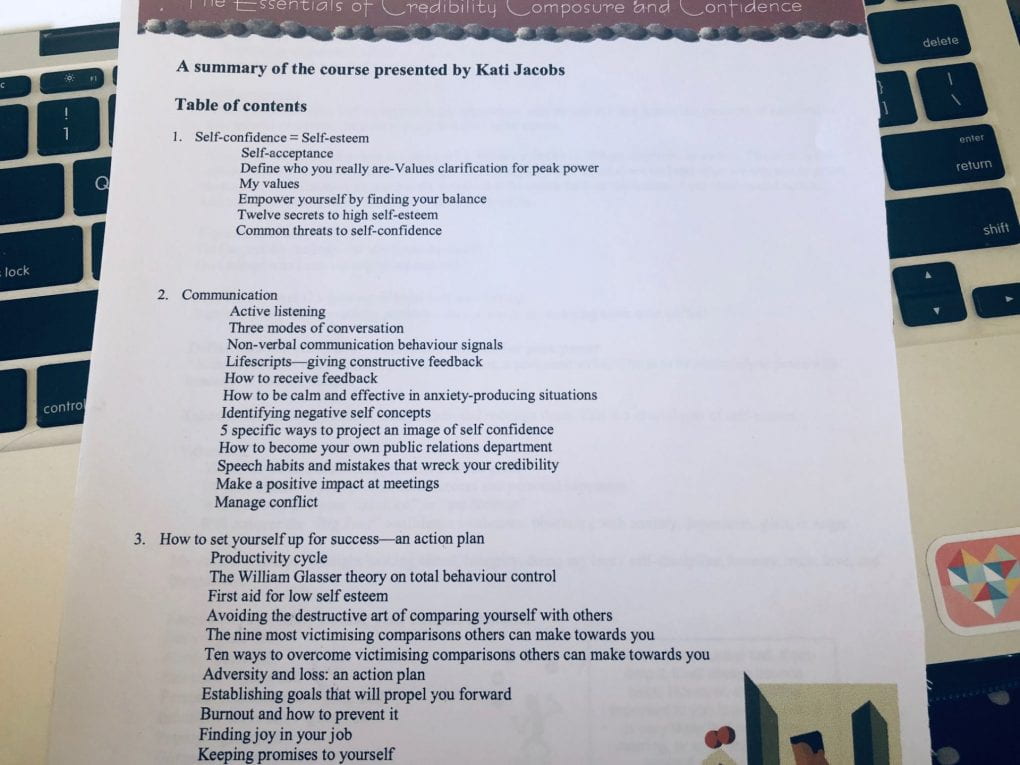
14 Rules for Effective Communication:
 I worked in a call centre in the finance sector for many years in my 20’s just after I immigrated to Australia. Luckily, my employer was a large, publicly listed company who invested heavily in employee training and as a result, I have an in-depth understanding of communication — I just need to remember it all! Much of what was said in the videos in Module 3.2 (2019) Leading Change was a refresher for me.
I worked in a call centre in the finance sector for many years in my 20’s just after I immigrated to Australia. Luckily, my employer was a large, publicly listed company who invested heavily in employee training and as a result, I have an in-depth understanding of communication — I just need to remember it all! Much of what was said in the videos in Module 3.2 (2019) Leading Change was a refresher for me.
In the communication video (Alanis Business Academy, 2012) and in the Ceconi video (Nohria, 2016), Davies (n.d.), Minute MBA (2012) and in the Bender (2005) book chapter, I think it was important to note:
- Even when we don’t communicate, we are always communicating, either directly or indirectly – [which links to the ‘NSW DET Positive Behaviour for Learning’ and other child services mantra that ‘all behaviour is communication’];
- We need to recognise and follow the school’s hierarchy (seeking clarification and improving policies in times of doubt);
- We need to keep communication open even in challenging situations, utilising a variety of communication formats and refrain from being distracted;
- We need to remember to begin and end with positives and emphasise areas in which we agree (particularly, in Australian settings, performing an Acknowledgement of Country and brief welcome to individuals at the start of every meeting);
- We must consider the communication device carefully, taking into account ease of communication, our (direct) words (30% of communication) as well as the other (indirect) 70% of communication: body language, tone and volume (or lack thereof in digital formats);
- We need to consider our own encoding barriers and the barriers of our receiver: environment preferences, knowledge, age, personality, habits, background, social customs, emotional and mental diversity;
- Because of the barriers listed in #6, we also need to make a real effort to be careful and thoughtful of what we say and how we say it, e.g. adjusting language to suit the situation; using jargon, technical terms versus informal language; and trying to use ‘I’ statements wherever possible as opposed to ‘you’ statements;
- We need to be respectful, (rather than the most recently maligned ‘political correctness’) in both formal and informal situations;
- We need to be clear, concise and consistent when communicating across all platforms, regardless of whether your communication is about positive or negative information;
- We need to keep and open mind and be willing to compromise – and not just expect compromise from the receiver;
- The receiver decodes the message amongst ‘noise’ in the background, physical, mental or emotional issues that must also be considered; We need to monitor the receiver for active listening;
- Request or expect regular and ongoing feedback from the receiver (eg. ‘what I heard you say was…’) which we should not be jumping to conclusions, getting distracted nor thinking of our own response but instead, we must actively listen to the receiver’s message and remember what they have said; and
- We should respect the receiver’s confidentiality and avoid gossip [‘triangles.]
- We need to follow up and action anything that comes up in our conversations and survey our team to see if we are being productive leaders, such as a 360 Degree Feedback Survey (or similar).

Conflict Resolution:
Conflict (or ‘dissensus’) can be a great avenue for ‘win/wins’ and authentic change in an organisation (Plocharczyk, 2013, p.308). Our job as leaders in times of conflict is: timely, transparent and open communication, listening (actively), responding with new points of view and perspectives, and resolution by encouraging creative innovations – never avoidance (Plocharczyk, 2013, p.311). We need to focus on the process/’the how’ the work is being done, rather than the people/’the who’ doing the work (Johnson in Plocharczyk, 2013 p.316). We need to have proactive, clear guidelines and policies for behaviour defined and communicated simultaneously, so that everyone understands the policy and the restorative practices that will occur in the event of inappropriate behaviours.
Types of conflict (more than one can occur at a time): Intra-personal (conflict within yourself); Solution: releasing anxiety through talking to others; Interpersonal (individual conflict with another person); Solution: adjustments or mediation; Intra-group (individual conflict within members of a team); Solution: embracing the conflict as necessary part of problem-solving (see this article by Jacob Stringer on New Compass about consensus versus dissensus) and goal achievement or mediation; Intergroup (a group conflict with another group in the organisation); Solution: clarification of goals, interests, competition, resources, or group identity (Evans, 2013); and Task / Organisational (individual conflict with others based on the constructs or policies of an organisation such as tight budgets, shared resources, unequal workloads, unclear future employment, boredom or undefined values, goals, objectives or role descriptions); Solution: ‘integrative conflict management’, collaboration, analytical thinking, problem solving, mediation from a third party, or clarification/revision of company policies (Plocharczyk, 2013, p.311).
So what kind of conflict manager will I be? I took the survey suggested in the module but I didn’t really get much out of it. The questions seemed repetitive and out of context. I often get emotional at conflict situations, depending on who they are with. (I have  anxiety, undiagnosed, in all social situations but particularly those that are new or unfamiliar). I recognise that and try to listen more than I speak.
anxiety, undiagnosed, in all social situations but particularly those that are new or unfamiliar). I recognise that and try to listen more than I speak.
I like the idea of having a policy on behaviour (like the NSW DET Code of Conduct) and utilising the Positive Behaviour for Learning / Restorative practice techniques that we use with students also in my work team. I realise there are those who disagree that behaviour is communication but I do believe that it is. And it is my job to listen to that behaviour and act appropriately. I will try to use Judy Ringer’s checklist in times of conflict, and a 360 Degree Feedback Survey (or similar) to make sure I am communicating and responding appropriately… Hope I will be up to the challenge!
References:
Alanis Business Academy. (2012, August 2). Episode 19: How the communication process works [Video file]. Retrieved from https://www.youtube.com/watch?v=q6u0AVn-NUM
[7.35 mins]
Belbin, R. M. (2010). The art of building a team. Chapter 9, pp. 97-106. Team roles at work (2nd ed.). Retrieved from ProQuest Ebook Central.
Bender, Y. (2005). Building effective communication, Part 1, p.3-18. The tactful teacher: Effective communication with parents, colleagues and administrators. Chicago, IL: Nomad Press. Retrieved from ProQuest Ebook Central.
BNET Video. (2011, June 8). 7 step problem solving. [Video file]. Retrieved from https://www.youtube.com/watch?v=bZXDGQSuF9I [4.38 mins]
Claxton, G., Costa, A., & Kallick, B. (2016). Hard thinking about soft skills. Educational leadership. 73-6 p.60-64. Retrieved from https://www.learningpersonalized.com/wp-content/uploads/2016/09/Hard-Thinking-about-Soft-Skills.pdf
Davies, L. (n.d.). Effective Communication. In Kelly Bear. Retrieved from http://www.kellybear.com/TeacherArticles/TeacherTip15.html
Evans, B. (2013, August 16). Types of conflict: Four classifications [Blog post]. Retrieved from http://www.typesofconflict.org/types-of-conflict/
Madsen, S. (2016). Kotter’s 8 step change management model [Video file]. Retrieved Mar. 2017 from https://www.youtube.com/watch?v=7qlJ_Y8w5Yk [4 mins]
McNamara, C. (2017). Problem solving and decision-making. In Free Management Library, Retrieved from http://managementhelp.org/personalproductivity/problem-solving.htm#guide
Minute MBA. (2012, November 13). Let your ears do the talking: How good managers listen [Video file]. OnlineMBA.com. Retrieved from https://www.youtube.com/watch?v=nk1VnXTC1_I [1.39 mins]
Nohria, N. [HR360Inc]. (2016, January 7). Steps to successful employee communication [Video file]. Retrieved from https://youtu.be/bRXLTZMvy-U
Plocharczyk, L. (2013). Managing conflict and incivility in academic libraries (part 12). In K. Blessinger & P. Hrycaj (Eds.), Workplace culture in academic libraries. Retrieved from ProQuest Ebook Central. [Elsevier Science version]
Porteus, A. (n.d.). Roles people play in groups. Stanford University. Retrieved March 5, 2017 from https://web.stanford.edu/group/resed/resed/staffresources/RM/training/grouproles.html
Roberts, R. (2012, September 12). How identifying the different roles can help groups work better together [Blog post]. Retrieved from https://elt-resourceful.com/2012/09/12/how-identifying-the-different-roles-we-play-can-help-groups-work-better-together/
Creating a Shared Vision, Goals, or Strategic Plan – Some Practical Tip Websites

Based on my readings of Module 4 and 5, I’ve added a GoogleDocs Survey to help create or evaluate a strategic plan, mission, vision and values to the left menu bar of this blog.
Here are also some practical websites offering tips and steps for creating and evaluating the process of a shared vision, strategic plan, objectives and goals:
Creating a vision by Clearpoint Strategies
Shared vision by Jessie Lyn Stoner on Leadership
Shared vision by Ellevate Network
Shared vision by Magazine Vunela
What are SMART goals by Smart Goals Guide
Setting goals by Ellevate Network
Setting and evaluating goals by Mindtools
Writing a strategic plan by Chron
Writing a strategic plan by the NSW DET
